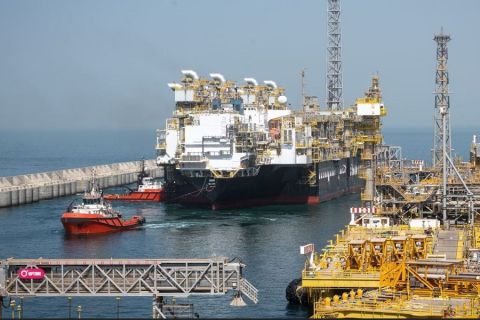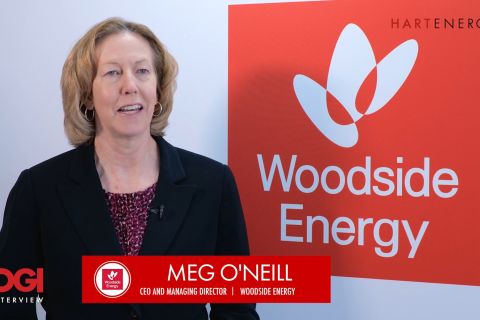improve the training to include three important aspects of collaboration: quality assurance, data exchange, and effective communication. The best person, perhaps the only person, who can assess the quality of a geoscience interpretation is the geoscientist who did the interpretation. This assessment should be included with the interpretation such that downstream users of the interpretation (e.g., engineers) can effectively use the data. This will require a standard data exchange object including the quality assessment and “integration” training of both the geoscientist and engineer to effectively understand the data exchanged. This collaboration helps ensure a single standard earth model that the entire asset team uses to make predictions of reservoir behavior.
Geomechanics
Geomechanics is a branch of science that deals with the behavior of earth materials when subjected to forces (stresses) or displacements (strains). Interest in geomechanics has skyrocketed in recent years to better understand formation behavior. For instance, how can the integrity of the engineering design be ensured, or how can the recovery of finite resources be optimized? The geomechanics engineer often has been at the point of maximum integration. To build a geomechanical earth model, the geomechanics engineer needs to integrate data from a diverse array of geoscientists. The structural model comes from the geologists; the petrophysical model from the petrophysicists; and the seismic, acoustics, and rock physics model from the geophysicists. The data are integrated with measurements made on recovered core and translated to other wells in the field. Geoscientists are now on the receiving end of data exchange with the integration of in situ measurements of pore pressure, stress tests, and time-indexed or time-lapse observation of mechanical behavior. In addition, production data also are used to constrain the earth model.

The US EP workforce that was in place in 2000 will decline due to retirement and attrition, while the incoming graduates will be insufficient to fill the gap. (Graphic from National Petroleum Council, paper #23 Human Resources, 2007)
Multidisciplinary research
Academia is the natural place to introduce multidisciplinary integration. Digging deeper into each discipline is important, and the industry needs people with this expertise, but the industry also needs people to think broadly about complexity and how best to solve a problem that has 27 independent variables, some of them geoscience variables and some of them engineering variables. Students think long and hard about which discipline to specialize in, often delaying the decision for as long as possible. It may be that the more important decision is not what discipline to specialize in but how best to integrate with the non-chosen disciplines. The result will be a broader thinker and a more skilled addition to the industry.
Industry can help facilitate this in several ways. The first is participation in research consortia that aim to contribute to these complex problems. This will require high-quality and complete datasets encompassing all disciplines and data scales. Today it is extremely difficult or financially impossible for any single entity to solve a typical complex problem. It will require collaboration between academia, industry, and government. Some wells will need to be drilled just for science. In addition, the senior or retiring industry worker can contribute by mentoring the next-generation student. Collaboration, integration, and multidisciplinary communication are skills that need to be developed, and academia is the appropriate venue. An endeavor such as this will inspire the next generation of geoscientists and engineers.
Recommended Reading
Deepwater Roundup 2024: Offshore Australasia, Surrounding Areas
2024-04-09 - Projects in Australia and Asia are progressing in part two of Hart Energy's 2024 Deepwater Roundup. Deepwater projects in Vietnam and Australia look to yield high reserves, while a project offshore Malaysia looks to will be developed by an solar panel powered FPSO.
Deepwater Roundup 2024: Offshore Africa
2024-04-02 - Offshore Africa, new projects are progressing, with a number of high-reserve offshore developments being planned in countries not typically known for deepwater activity, such as Phase 2 of the Baleine project on the Ivory Coast.
Tech Trends: Halliburton’s Carbon Capturing Cement Solution
2024-02-20 - Halliburton’s new CorrosaLock cement solution provides chemical resistance to CO2 and minimizes the impact of cyclic loading on the cement barrier.
BP: Gimi FLNG Vessel Arrival Marks GTA Project Milestone
2024-02-15 - The BP-operated Greater Tortue Ahmeyim project on the Mauritania and Senegal maritime border is expected to produce 2.3 million tonnes per annum during it’s initial phase.
The OGInterview: How do Woodside's Growth Projects Fit into its Portfolio?
2024-04-01 - Woodside Energy CEO Meg O'Neill discusses the company's current growth projects across the globe and the impact they will have on the company's future with Hart Energy's Pietro Pitts.





